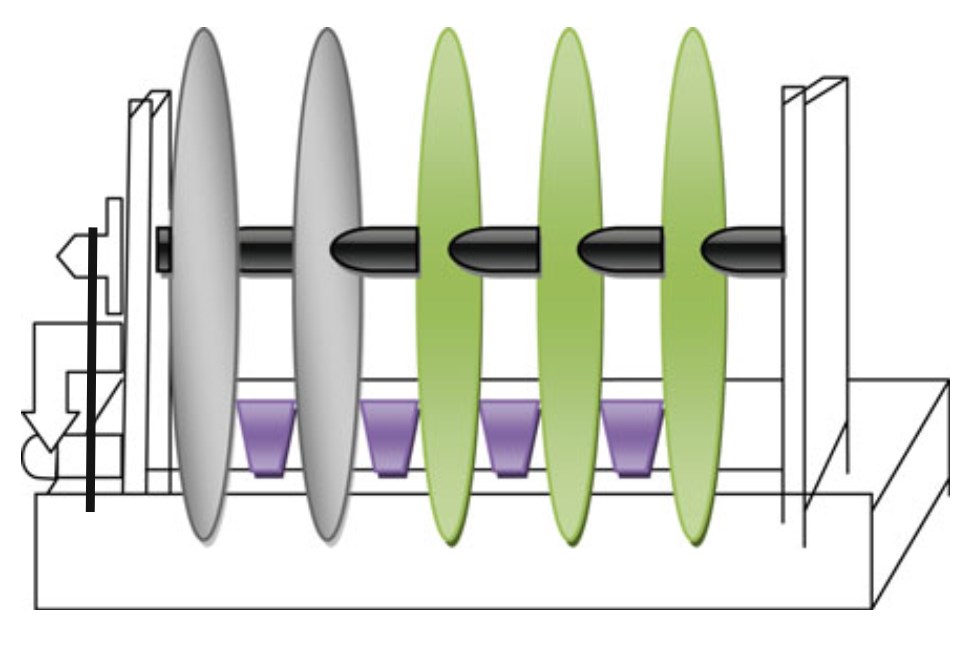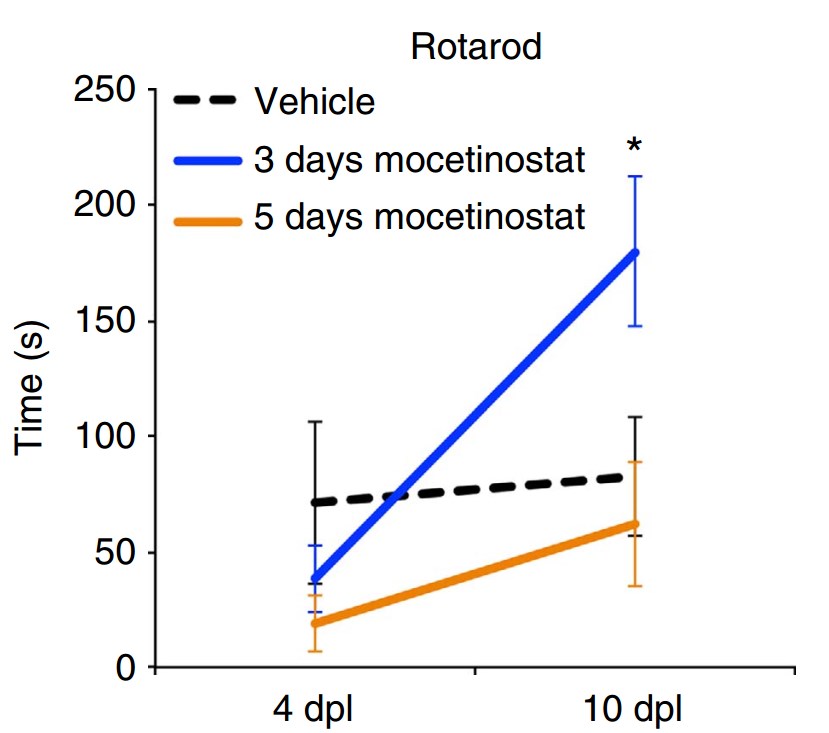Rotarod Test
Due to the concern for impairment in human motor behavior from the use of prescription medications, the rotarod test is frequently used in early stages of drug development to screen out drugs that might later cause subtle impairments, which might not be detected epidemiologically in a human population for a very long time. Creative Biolabs conducts the rotarod test to assess fore- and hind limb motor coordination and balance in a mice or rat model.
Introduction of Rotarod Test
The “rotarod” technique was originated by N.W. Dunham and T.S. Miya. It has proved to be of great value in preclinical research in the testing of drugs which affect motor coordination. The rotarod test is a performance-based test on a long cylindrical rotating rod with forced motor activity being applied, usually by rodents.
 Fig.1 Rotarod apparatus. (Jamwal et al. 2017)
Fig.1 Rotarod apparatus. (Jamwal et al. 2017)
In this test, a rodent is placed on a long cylindrical rod which rotates along its long axis. The speed of the rod is can be held constant or accelerated. However, if the speed is constant, some animals with poor coordination will fall off at the start, whereas for those that do stay on, the test will soon start to measure endurance rather than coordination per se. As a result, the accelerating version is more frequently used. When rodents fall off from the rod onto the plate placed below, the animal latency to fall (in seconds) is recorded. The length of time the animal stays on this rotating rod is a measure of their balance, coordination, physical condition, and motor planning. Any other activity or observations during the test like the occurrence of jumping, passive rotations can also be recorded.
Features of the Rotarod Test
- This test can be used to evaluate balance, grip strength, and motor coordination of the rodents, especially during testing of experimental drugs in animal models of movement disorders or after traumatic brain injury.
- This test creates a discretely measurable, continuous variable (length of time) that can be used for statistical purposes to quantify the effects of different drugs, conditions, and procedures.
- This test does not use subjective judgments of ability, and inter-rater reliability will be virtually perfect. Inter-laboratory reliability and replicability will be achieved if the various parameters including the size and speed of cylinder, composition material of surface, and amount of practice/training given the animal are also replicated.
- Testing of genetic knockout animals may help determine the genes most responsible for maintaining mammalian balance and coordination.
 Fig.2 Quantification of motor function recovery by Rotarod test at 4 d and 10 d post lesion (dpl). (Valérie et al. 2017)2, 3
Fig.2 Quantification of motor function recovery by Rotarod test at 4 d and 10 d post lesion (dpl). (Valérie et al. 2017)2, 3
Creative Biolabs also conducts the following behavioral tests for motor function assessment:
Creative Biolabs provides highly customized behavioral tests to suit specific scientific needs. Moreover, new behavioral tests of motor function are developed and validated. In addition, as an undisputed specialist in neurological disease drug development, Creative Biolabs has an extensive range of rodent neurological disease models for drug efficacy studies:
For more information, please contact us or send us an inquiry.
References
- Jamwal, S.; et al. Behavioral Tests for Rodent Models. Animal Models of Neurological Disorders. 2017.
- Valérie, Brügger.; et al. Delaying histone deacetylase response to injury accelerates conversion into repair Schwann cells and nerve regeneration[J]. Nature Communications. 2017, 8:14272.
- under Open Access license CC BY 4.0, without modification.
For Research Use Only.
